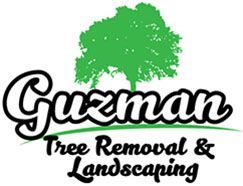Landscaping and Tree Removal in Southbury, CT and the Surrounding Areas
Request Call Back
Hero Request Form
Expert Tree Removal Services You Can Trust
Since 2009, Guzman Tree Removal has been the name to trust for comprehensive tree services throughout Connecticut. With over 25 years of experience, our fully licensed and insured team offers unparalleled expertise, ensuring your property is safe and looking its best. We understand that emergencies can happen at any time, which is why we offer our 24/7 emergency services.
Fair pricing and quality work are the cornerstones of our business, and we provide free estimates within 24 hours to get your project started without delay. Plus, take advantage of our special offer—20% off on certain jobs. Whether you need tree trimming, hardscaping, or tree removal in Seymour, CT, Guzman Tree Removal is your go-to for all your outdoor needs. Call or text us today to get started!
Why Choose Guzman Tree Removal?
Choosing Guzman Tree Removal for your landscaping and tree removal in Seymour, CT and the surrounding areas means reliability, experience, and exceptional customer service. Our team is dedicated to providing top-tier tree care services that prioritize your safety needs and satisfaction. We pride ourselves on fair pricing and delivering quality work every time.
With our 24/7 emergency service, you're never alone in a crisis. Plus, our commitment to offering free estimates within 24 hours ensures you're never left waiting. Experience the difference that comes with over 25 years of expertise and make Guzman Tree Removal your first choice for all your tree care needs.
Tree Removal Services
Tree removal in Southbury, CT or nearby areas can be a daunting task, but not with Guzman Tree Removal. Our skilled professionals use the latest equipment to safely and efficiently remove trees, no matter the size or location.
We ensure minimal disruption to your property and surroundings, leaving your space clean and clear. Whether it's a dead tree threatening your home or an old stump that's become an eyesore, we can help! Contact us today to see why we provide the expert tree removal Southbury, CT relies on.
Tree Trimming Services
Tree trimming is essential for maintaining the health and look of your trees. At Guzman Tree Removal, our experts carefully prune branches to promote growth, improve appearance, and prevent potential hazards.
Regular trimming can prevent disease, enhance sunlight penetration, and keep your landscape looking pristine. Trust us to keep your trees in optimal condition all year round.
Hardscaping Services
Transform your outdoor space with our hardscaping services. From patios and walkways to retaining walls and fire pits, our team provides solutions that blend functionality with aesthetic appeal.
Guzman Tree Removal works with you to design and build hardscapes that complement your home and lifestyle. Enjoy a beautiful, durable outdoor environment that adds value to your property.
Excavation Services
Our excavation services are tailored to meet your specific project needs. We handle each project with precision and care, ensuring the groundwork is perfectly set for your next big project.
Whether you’re preparing for new construction, installing a pool, or addressing drainage issues, Guzman Tree Removal has the expertise and equipment to get the job done right.
Grading Services
We offer professional grading services for level land that is properly sloped. This not only prevents water damage but also lays the groundwork for any landscaping or construction projects.
Proper grading is critical for effective water drainage and a stable foundation. Trust our experienced team at Guzman Tree Removal, to provide grading solutions that protect and enhance your property.
Wood Removal Services
Guzman Tree Removal offers fast, safe, and eco-friendly wood removal, handling everything from logs to debris, efficient cleanup, and responsible disposal to leave your yard spotless.
We provide a free estimate and prioritize the safe removal of all wood and debris while committing to eco-friendly cleanup and disposal practices. Let us help you enhance the beauty of your outdoor space!
Here's what our satisfied customers are saying...
At Guzman Tree Removal, we take pride in providing exceptional tree care and hardscaping services to our customers. We would be grateful if you could share your thoughts about our business with others. Your feedback helps us improve and helps others make informed decisions. Please take a moment to leave a review of Guzman Tree Removal and let others know what you think.


Share On: